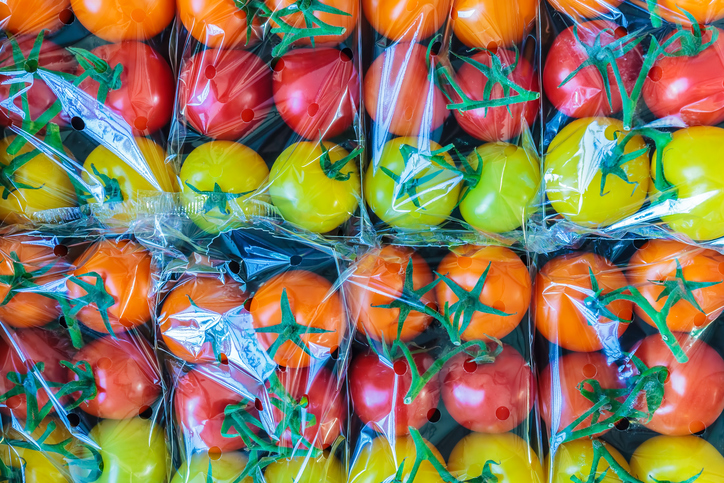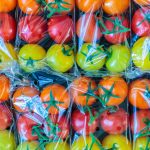For fresh produce, the journey from soil to store shelves is an involved process. From picking and pulling to sorting into punnets, the packaging of fresh fruit and produce is just one part of this journey, but for packhouse operators with an eye on their bottom line, it’s also one of the most important.

Once produce is harvested, the shelf-life timer starts ticking. Faster packaging processes can help alleviate this pressure. In fact, it’s the area most ripe for major gains in speed and efficiency, streamlining the entire supply chain to deliver savings for the producer in the form of time, labour, and overall cost-per-pack, as well as a tastier, more nutritious product for retailers and consumers alike.
The faster the journey from the field to the store, the better for the supplier, the retailer, and the consumer. But how? Fresh produce packhouses can move product through the various packaging stages and out the door more quickly in a number of ways. A few of which we’ll be exploring today, including automating as many processes as possible, improving packhouse layout and product flow, and ensuring workers are motivated and able to carry out their jobs at optimum speed.
1. Automation – the competitive edge
To remain competitive and profitable, packhouses need to find a way to stretch resources and limit expenses. One of the most common ways to save money is to automate processes and eradicate wastage while providing consumers with an even better, fresher, tastier product.
Technology in the form of automation is an industry-changer providing increased capacity, quality, and speed. Automation gives the fresh produce packaging industry a leading edge in much the same way innovative screw and auger conveyors are facilitating a similar increase in efficiency and productivity within adjacent sectors such as rendering, meat meal, and bone.
Almost any process in the journey through the packhouse can be automated – from sorting to labelling – which frees up your workforce to do more, limits operator intervention, and maximises safety and productivity.
Some of the time consuming fresh-produce handling processes that benefit from automation include;
- Bin Tipping and Counting.
- Bag Filling.
- Weighing and Labelling.
- Case Packaging.
- Palletising / Depalletising, including Strapping and Wrapping.
- Internal Case or Tray Transport.
2. Packhouse layout – a logical flow throughout
As a packhouse evolves, expands, and changes the initial layout and design may not be generating the most efficient results.
To start, take stock of the layout of the packhouse by drawing up a rough floor plan. Add existing doorways – both external and internal – and mark roughly where stationary machinery is placed. Indicate current areas for loading, stacking, and storage. Mark areas for vehicle movement and the movement of workers. Finally, map the flow of the product through the packhouse.
With plans in-hand, ask yourself:
- Is the product flow logical?
- Are there any obvious inefficiencies where a product is back-tracked or handled unnecessarily?
- Could conveyors or packaging machinery be moved so the product flows more logically and smoothly?
- Are the three main activity areas of product reception, preparation/packaging, and product despatch functioning appropriately?
The overall design of a packhouse should ensure that floor space is adequate for easy movement, doors are wide enough for passage of vehicles and pallets, storage areas are sufficient for packaging materials, and all surfaces can be easily washed and drained. The reception and despatch areas also need to be designed capably for incoming and outgoing produce transport vehicles to load and unload quickly.
A few simple adjustments to the flow of the product through the packhouse could shorten the packaging timeframe exponentially.
3. Consider your workers – your best asset
One of the best assets in your packhouse is your workers.
They can single-handedly increase efficiencies, so long as you:
Get their input: No-one knows your packaging processes better than your team on the floor. Ask them what the bottlenecks in the process are. They’ll know. What’s more, they’ll probably have the solution to smooth the process.
Find out what jobs are back-breaking or time-consuming or could be addressed in a safer, faster, and more efficient way. They’ll appreciate your interest and the opportunity to be involved in making their own jobs easier.
Respect your workers: Provide a clean and comfortable toilet, washing, and food-break areas. Workers who are paid fairly, given proper training, and treated with respect will go the extra mile for an employer. Their extra productivity alone could speed up a single process.
Incentivise the process: Incentivising outputs for a day or a week can rouse morale (and team competitiveness) and bring workers together to reach those goals. A win-win for both you and your workers.
The Fresh-Produce Packhouse doesn’t have to be a madhouse
With these practical steps, a packhouse has the opportunity to be competitive in the fresh produce packaging process and make savings on time, labour and money…all of which add to the bottom line.





